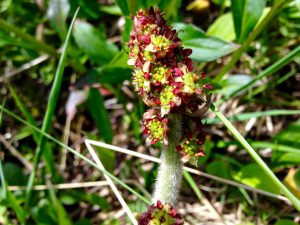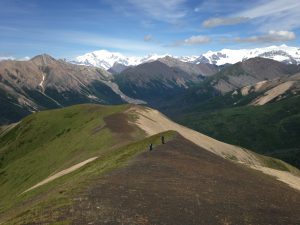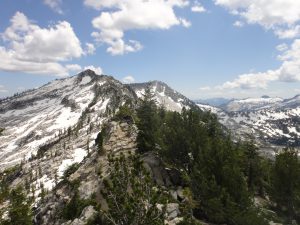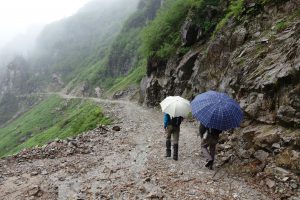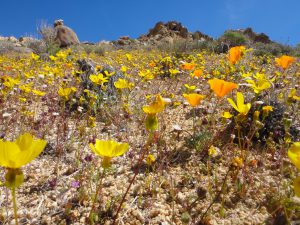UFBI Fellows in their natural habitat:

Pinnacles National Park at dawn. Photo Credit Joan Meiners.

It takes more skill and agility than you might think to catch 52000 bees in two years. Therese Lamperty in the zone. Photo Credit Joan Meiners.

As part of her Master’s work, Joan Meiners and colleagues caught 52,000 native bees at Pinnacles National Park.

Balconies Cliffs Trail at Pinnacles National Park. Photo Credit Joan Meiners.

Pinnacles National Park rock ridge from the North Wilderness Trail. Photo Credit Joan Meiners.

McCabe Canyon at Pinnacles National Park during peak Penstemon centranthifolius bloom. Photo Credit Joan Meiners.

The Old Pinn/Balconies Cave Trails at Pinnacles National Park. Photo Credit Therese Lamperty.

Squeezing through the rocks to enter the Balconies Cave from the west side of Pinnacles National Park. Photo Credit Therese Lamperty.

Catching bees! That’s what we do. Joan Meiners works a native bee into a vial from her net. Photo Credit Therese Lamperty.

Searching for bees in the High Peaks of Pinnacles National Park. Photo Credit Joan Meiners.

Hiking in February at Pinnacles National Park, looking for unlikely snow bees. Photo Credit Darin Grassman.

Agapostemon bee on Asteraceae at Pinnacles National Park. Photo Credit Paul G. Johnson (NPS)

Bumble bee on Arctostaphylous at Pinnacles National Park. Photo Credit Paul G. Johnson.


